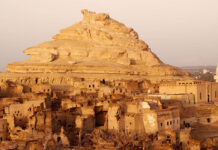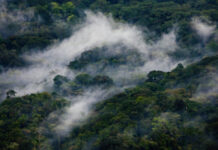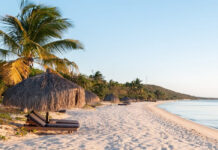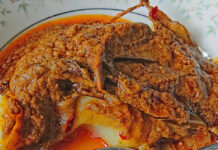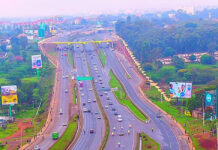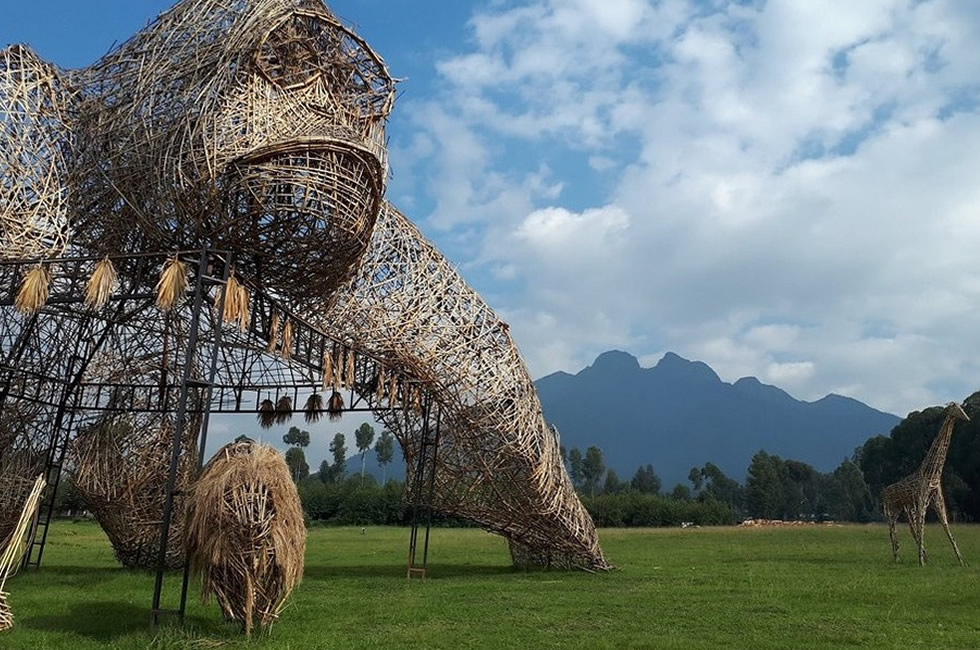Mountain gorilla trekking, bird watching, classic game drives, nature walks, cultural experiences, hiking, and lakeside relaxation—these are just some of the ways to spend your vacation in Rwanda. The country has experienced a dynamic transformation since the tragic genocide that took place in 1994. Memorials are scattered throughout the country, but the people of the “Land of a Thousand Hills” do not let history control their destiny, and visitors have the opportunity to develop a deep appreciation for the growth and unity of the Rwandan people. Conservation organizations, government agencies, and ordinary Rwandans have developed strategies to ensure long-term prosperity for the next generation, founded on the country’s many natural treasures, the best-known of which are the Virunga’s mountain gorillas of Rwanda.
The country also offers magnificent hiking and trekking through dense rain forests to the summits of volcanic peaks, and even high above the tree canopy. In Rwanda you are always near amazing wildlife, both large and small. The treetops are filled with the chatter of primates and the calls of birds. Butterflies drift along wind currents in search of the perfect wildflowers. As you explore the country on a guided Rwanda safari you sense the presence of the sovereigns who once ruled here, and you may even meet Rwandans who keep alive ancient traditions and crafts that go back many centuries.
The Captivating Mountain Gorillas of Rwanda
Thanks to the incredible work of Dian Fossey and other global conservationists, Africa’s mountain gorillas have captured the hearts and minds of people around the world. If seeing these creatures in the wild is your ultimate dream, tour their natural habitat in the Rwandan Volcanoes National Park. Efforts to protect mountain gorillas from the effects of habitat destruction, poaching, and other threats have led to the creation of an amazing infrastructure that provides the privacy and support the gorillas need to not only survive in the modern world, but thrive for generations to come. The Rwandan government restricts the number of visitors who are allowed to view the gorillas, and this means that securing your premium spot for a mountain gorilla trek is a privilege few people experience. Estimates indicate that approximately half of the mountain gorillas in the world live in the Virunga Mountains, part of the Volcanoes National Park, so your primate trek through the montane forests will be rewarded with an hour of watching the gorillas engage in natural behaviors.
The heartwarming scene will highlight the close bonds between the members of the gorilla family, as well as the playful antics of gorilla infants. The presence of a powerful silverback will stir your emotions as he sits quietly, ever watchful of his family, with a gentle nature that makes human onlookers feel connected in an unexpected way. Participating in a mountain gorilla trek in Volcanoes National Park requires a great deal of coordination, as relatively limited permits are issued each day. Working with Primate Safaris Experiences to arrange your mountain gorilla trekking and other activities in Rwanda helps to ensure that you will have a captivating experience with these creatures. We work with you to create a personal travel schedule that fits your needs. Every detail is taken care of by your Primate Safari experiences consultant, including acquiring the necessary permits for your mountain gorilla safari to all the logistics of the trek day.
Walk In The Footsteps Of Famed Primatologist Dian Fossey
Visiting the former research home site of Dian Fossey is the perfect complement to any mountain gorilla trek. Hiking up her grave shrine is an experience that appreciates education, courage, advocacy, celebration, and tragedy. Fossey was known for her work as a primatologist, both studying the gorillas and spearheading efforts to protect them. In 1967 Ms. Fossey began a research effort that would ultimately become her life’s work, as well as the foundation for developing a deep, personal connection to the primate species and to many of the individual gorillas with whom she spent her time. Her most beloved gorilla was a silverback she named Digit. After first spending time in the Democratic Republic of Congo studying mountain gorillas, Fossey was taken prisoner by soldiers. She escaped and relocated to Rwanda, where she established the Karisoke Research Center. The prevalence of poaching at the time had taught the gorillas to be fearful of humans, but Fossey was able to gain their trust with her quiet patience, diligence, and respect.
In addition to studying the primate, Ms. Fossey and her staff conducted anti-poaching patrols to protect the gorillas and rescue those that were orphaned. Many of the gorillas she studied were killed by poachers over the years, including Digit, who was killed while protecting a baby gorilla. In 1985 Fossey also became the victim of poachers, who saw her as a threat and murdered her. The Dian Fossey Grave Shrine Tour in Volcanoes National Park allows you to walk in Fossey’s footsteps and visit the site where her remains are buried alongside Digit and other gorillas. Spending time at the site and learning about Fossey’s work will connect you to the world’s endangered mountain gorillas in a way certain to be one of the most intimate and heartfelt safari experiences of your time in Africa.
World-Class Hiking & Trekking
If you daydream about climbing, hiking and trekking in the African highlands bush, Rwanda is the preeminent destination for your outdoor vacation. Both Nyungwe Forest and Volcanoes National Park offer superb networks of trails that take you into some of the most breathtaking landscapes on the planet. No matter your fitness or experience level, Primate Safaris Experiences will help you find trails that will exceed your expectations. The most challenging of the treks takes you to an elevation of 4507 meters, to the snow-capped summit of Mount Karisimbi in Volcanoes National Park, the highest peak of the eight major volcanoes in the Virunga field. The two-day trek will challenge you physically and mentally while immersing you in the beauty of four distinct vegetation zones. Another high-elevation hike waits at Mount Bisoke, the most visited summit in the Virungas. The 6-7 hour amateur ascent hike takes you near agricultural fields, through a forest, and near the Dian Fossey gravesite before reaching the unexpected surprise of a crater lake at the summit.
Nyungwe National Park, in southwestern Rwanda, seems to be fashioned solely for the hiker or trekker in all of us! A network of trails crisscrosses and winds through the park, offering everything from leisurely one-hour nature walks to seven-hour and multi-day outings for experienced hikers. The immense beauty of towering trees, waterfalls, delightful primates, and colorful birds is the centerpiece of many of the trails in Nyungwe Park during your tour, but some trails offer true adventures for our guests. The most challenging trail in the park is the Congo-Nile Divide Trail, a pathway along two legendary rivers, where hikers can daydream about being an early explorer seeking the mysterious source of the Nile River.
For a unique view of the rainforest, the novice-level Canopy Trail takes you to observation points above the treetops. History buffs will love the chance to step back in history on Karamba Trail and visit a former gold mine, an army camp, and a local market. Photographers will be thrilled by the stunning beauty of Rwanda’s wildflowers along the Igishigishigi Trail. For a change of pace, take the Kamiranzovu Trail to the park’s wetlands and swamps to discover large and small creatures that inhabit these unique ecosystems, or pack a picnic lunch and head to Ngabwe Trail to enjoy a lovely outdoor meal with impeccable views. Simply imagine your ideal hiking and trekking holiday, and Rwanda will deliver an experience like no other!
Primates, Primates, & More Primates!
Mountain gorillas are the best-known of Rwanda’s primates, but the country offers many other scampering creatures to delight visitors, including chimpanzees, golden monkeys, blue monkeys, and black and white colobus. Chimpanzees are considered the most human-like of primates, and Nyungwe National Park is the premium destination in Rwanda for chimpanzee viewing experiences. Just before daylight, you start a journey into the forests where families of chimps live in a natural habitat. Each day the groups of chimps move through the forest in search of food before finding a secluded place to build their nests and rest for the night. Fortunately, our guides are experts in locating the chimpanzees, so your chances of seeing them are very good.
Another primate species that thrills our guests is the golden monkey, a colorful species that constantly scampers through the treetops, stopping only to dine upon fruits and leaves. The golden monkeys of Rwanda can be found in the incredible bamboo forests of Volcanoes Park, as well as Gishwati-Mukura Forest in the northwestern part of the country. Unconfirmed sightings have also been reported in Nyungwe Forest. Another of the 14 primate species in Rwanda, many of which are endemic and endangered, are the black and white colobus monkeys that live in groups of over 300, the largest of their kind on the continent. Hikes through the deep African rainforest to find the colobus can be challenging for some guests. During your primate treks, you may also come across blue monkeys, grey-cheeked mangabeys, vervet monkeys, Dent’s monkeys, L’Hoest’s monkeys, and red-tailed monkeys.
Kigali: The Heartbeat Of Modern Rwanda
Kigali is considered one of the friendliest capital cities in Africa, and its metropolitan ambience is a great complement to your time in the Rwandan bush country. The population of the city is young, so you will find a diverse range of engaging activities blended with a bit of history and culture. As Rwanda continues to emerge from a tragic past, Kigali represents the future; it has become a thriving center for business and economic development, while maintaining its charming character. Development has been well planned to preserve the natural contours of the surrounding hillsides. The city is divided into distinct districts, with one reserved for government and administrative buildings. In another district, the city center is surrounded by shops and markets.
In Kigali, a new treasure awaits around each corner as you travel the roads that wind through the city. You can learn about the country’s flora and fauna at the Kandt House, which features three sections, each highlighting an aspect of Rwanda’s ecological resources. Geology lovers immensely enjoy the displays in the back section of the museum, dedicated entirely to the country’s volcanism and the astonishing volcanoes in northwest Rwanda. Discover the country’s evolving artists at Inema Art Center. Stop by Ivuka Arts Center to watch artists make their creations before enjoying a nice lunch at Heaven Restaurant, which is decorated with the artists’ work. Next, head over to Niyo Art Gallery to learn about how art is helping street children in Rwanda, and perhaps make a donation to support the education, medical care, and daily basic needs of less-fortunate Rwandans.
Support sustainable fair-trade tourism by purchasing traditional crafts such as drums, baskets, wood carvings, and ceramics at Capalaki Handicrafts Cooperative, and see local Twa people perform traditional dances at The Dancing Pots. Be sure to take a look at the Parliament Building and Presidential Palace, which contain so much of the country’s history, including debris from the presidential plane that was shot down on April 6, 1994, the catalyst for Rwanda’s darkest chapter.
The Cultural People Of Rwanda
The three cultures of Rwanda once clashed, largely over socio-economic differences, but today the Tutsi, Hutu, and Twa peoples represent a common commitment to the betterment of all Rwandan people. Through unity, collaboration, and absolute dedication, the people of Rwanda take every measure to ensure that the fabric of their country is never again torn by genocide and other crimes against humanity. Meeting some of the people from these three tribes allows you to see the value of each of their cultures and their pride in the homeland. Primate Safari Experiences offers cultural tours that are sensitive to the preservation of Africa’s indigenous tribes, and all of our cultural activities are carefully coordinated with the local communities. Our goal is to provide our guests with authentic cultural engagements with Rwandan people while ensuring the privacy and respect that villagers need to maintain their cultural traditions. The activities allow villagers to share their culture, arts, beliefs, and much more, while providing a source of income that supports education, medical care, and other valuable resources.
At Ibyiwacu Village, outside Volcanoes National Park, our guests are greeted by an amazing presentation featuring traditional drumming and dancing coupled with warm, heartfelt Rwandan hospitality. You visit a replica of the king’s house, learn about traditional medicine, meet children at the local school, and even sample some delicious food and banana beer. During your visit to Nyungwe National Park, take some time to explore Banda Village, in the heart of the park, and Kitabi Cultural Village, on the eastern edge of the park. With advance preparation, you can even stay overnight in the villages to see another side of day-to-day life here. Families traveling with older children always find the cultural activities in Rwanda to be educational and interesting for the loved ones. Imagine the delight on your children’s faces when someone from an exotic tribe shows them how to weave a basket, shoot a bow, or create a ceramic pot!
Rising From The Past
Delving into the tumultuous history of Rwanda is difficult for many guests; yet, seeing the genocide memorial sites first-hand provides valuable insight into the transformative journey of the Rwandan people. Memorials from the 1994 genocide are scattered around the country and remain in the same state as when the tragedy was unfolding. The Kigali Genocide Memorial Center provides visitors with a two- to three-hour orientation into the events that occurred at the site, where an over 259,000 victims lie buried. We recommend this exhibit as your last stop after visiting other sites in the country. Each display is beautifully designed to tell the story of Rwanda in a poignant and moving way. The indoor museum provides a historical overview of the events that led up to the genocide, as well as displays dedicated to Rwandan children who were killed. Another exhibit highlights the global issue of genocide, with displays that depict the Holocaust and similar tragedies in Bosnia, Southwest Africa, Cambodia, and Armenia.
In addition to the Tutsi, peoples from around the world were targeted around the same time the genocide took place. Camp Kigali Belgian Monument stands as a memorial to ten Belgian United Nations soldiers who were killed while protecting the prime minister. Their lives were taken to undermine international support that stood against the genocide. The Nyanza Genocide Memorial shows the next chapter in the genocide, after the Belgian soldiers were killed. The school was a hideout for 2,000 Tutsis, including 400 children, who were seized, taken to a nearby garbage dump, and murdered. Some of the most brutal killings occurred at two churches—Nyamata and Ntarama. These memorials are some of the most shocking and deeply emotional of all the memorials in Rwanda. The skulls and bones unveil the story of those who were murdered. Blood-stained walls, pews draped with clothing, sharpened stakes, bullet holes, and small wood caskets reveal a vivid and deeply emotional chapter in Rwandan history. The exhibits are so powerful that many guests find it difficult to reconcile the country’s past with the joy and warm-hearted hospitality that is Rwanda today—a contrast that is testament to the country’s dedication to defining and protecting a better future for all of its people.
Unique & Unforgettable Beach Escape
Believe it or not, Rwanda is home to one of Central Africa’s best beach escapes! Lake Kivu is the 18th deepest lake on the planet, with a total surface area of 2700 square kilometers at an elevation of 1460 meters. Imagine spending a few days exploring Rwanda’s lush green rain forests, communing with mountain gorillas, tracking chimpanzees, and walking in the footsteps of Rwandan kings, and then traveling a short distance to a sparkling lake and lovely beach for some rejuvenation. Lake Kivu offers endless possibilities for fun-filled beach days, including sailing, water sports, fishing, beachfront lounging, and much more! The splendid scenery does much to relax you. Explore the lake by way of a charter boat that will take you to one of the lakeside towns. Gisenyi is the most developed, with tranquil accommodations and post-colonial architecture nestled against sandy beaches dotted with swaying palm trees. Pine-covered hills invite guests to visit Kibuye, in the middle of the lakeshore, and Cyangugu, in the south.
In addition to the charming settlements along the lake, you can take nature walks to explore the flora and fauna, including an amazing bird population. While other lakes in Africa are home to hippos and crocodiles, Lake Kivu is free of these dangerous animals and safe for swimming. Kayaking, canoeing, jet-skiing, waterskiing, and windsurfing can also be arranged. Anglers can try their luck with native fish species, either from shore or by boat. Go hiking or cycling in the hills around the lake and visit a local flower plantation at the former home of Rosamond Carr, one of Dian Fossey’s closest friends.
Birding Paradise
Wherever you are in Rwanda, your incredible trip is sure to include some of the country’s colorful birds. Rwanda is home to an estimated 650 species of birds, a staggering number considering that the whole country measures only 26,338 square kilometers (10,169 square miles). What’s more, the diversity of habitats means that our guests can experience many different types of avian life, including the second highest number of Albertine Rift endemic species. The forest canopy at Volcanoes National Park offers refuge for 178 species, including 13 species and 16 subspecies endemic to the Rwenzoris and Virungas. Cinnamon bracken warblers, red-throated wrynecks, white-tailed blue flycatchers, and black-and-white mannikins are just some of the birds found in the park. Almost twice as many species are found at Nyungwe National Park, where 310 bird species have been recorded. Although many of the species are known to exist in unexplored sections of the park, you can easily spot Albertine Rift endemics from the road that runs along the park.
You may even come upon a Congo peacock that has drifted over from the Democratic Republic of Congo. Papyrus gonoleks and Grauer’s swamp warblers are found along the Nyabarongo River while following the trails through the forest near Uwinka is the best way to spot great blue turacos, white-bellied robin-chats, white-tailed crested flycatchers, and dusky and Shelley’s crimsonwings. Venture out in the evening with our guide and you may locate Albertine owlets, Congo bay-owls, and Rwenzori nightjars. Birding in Akagera National Park introduces you to some of the park’s 500 bird species, such as African openbill storks, bearded woodpeckers, martial eagles, splendid starlings, western banded snake eagles, African hawk eagles, and lappet-faced and white-headed vultures. You can even do a little bird watching while relaxing on the beaches of Lake Kivu, home to 60 Rwandan bird species.
Best Time to Go to Rwanda
If you’re researching when to go to Rwanda then the chances are that it’s for a gorilla trekking adventure. Although it’s regarded as a year-round activity, the best time to visit Rwanda for a gorilla trek is during the short dry season from mid-December to early February or over the long dry season months of June to September. These periods offer by far the easiest hiking conditions and the lowest malaria risk.
You can experience a primate safari in Rwanda outside these optimum times of year but bear in mind that the going will be more difficult in the rain as paths are steep and maybe muddy. It pays to be as fit as possible before you commence your trek.
The best time to go to Rwanda for chimpanzee trekking in Nyungwe, however, is during the two rainy seasons – mid-February to early June and mid-September to mid-December – as the apes are easier to locate. Food is harder to find in the dry seasons and the chimp families often range far into the forest interior.


